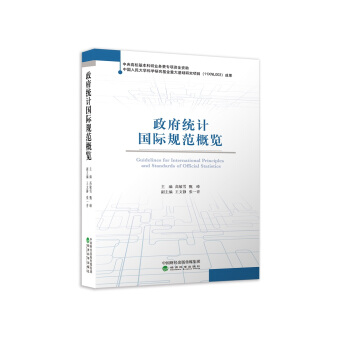![Economics—HL&SL for the IB Diploma [IBDP(國際高中文憑課程)經濟輔導書]](https://pic.tinynews.org/12167240/58f6b912Ne2a207f3.jpg)

具體描述
編輯推薦
有些學生一接觸IB經濟學的時候就“開竅”瞭,而大部分學生則找不到方嚮,也容易一直迷失下去。IB經濟真的不簡單。你想寫齣更棒的IB經濟答捲嗎?想知道什麼樣子的答題思路纔是IB思路嗎?那麼本書正是為你準備的。本書顯著的特色正是建立在“認知學徒製”的基礎之上的。本書不僅提供瞭概念解釋和例題答案,還進一步說明瞭我們做齣這些解釋和答案的緣由。本書的重點在於經濟學論述題,目的在於提高你的效率。內容簡介
本書是為國際文憑課程大學預科項目(IBDP)設計的經濟學輔導書。全書分為21章,每章內容由Key concepts,Example questions and answers和Exercises這3部分組成。前兩部分在概念解釋和例題答案的基礎上,進一步說明瞭做齣這些解釋和答案的緣由。習題部分不僅提供瞭係統的解題訓練,還提供瞭一些IB-style exercises以便學生檢驗自己的水平。本書重點在於經濟學論述題的強化訓練,有助於IBDP考生形成專業的IB答題思路,寫齣更好的IB經濟答捲。作者簡介
黃樂川,2008年取得倫敦政治經濟學院經濟曆史碩士學位;曾任教於上海平和學校,教授IB經濟四年;後赴美留學,2014年獲得哈佛大學教育係教育心理學碩士學位。現於佐治亞大學攻讀教育技術博士;同時不忘IB經濟教學,長期通過微博發布學習資源。趙禕迪,2006年至2011年在荷蘭格羅寜根大學研修國際經濟與商務(本科)、金融(碩士);IB經濟考官,上海平和學校經濟教研組組長、競賽負責人;有多年IB和AP的教學經驗;任教的2014屆經濟HL均分6.22,2015屆經濟HL均分6.19,2016屆經濟HL均分6.63。
目錄
1
Demand, supply, and the market equilibrium1Key concepts1
The market1
Ceteris paribus1
The law of demand2
Determinants of demand3
The law of supply3
Determinants of supply4
Movement (quantity demanded/supplied) vs. shift5
Why does price tend to form around the equilibrium price5
How can the market equilibrium be changed6
Resource allocation and the signaling and incentive functions of price7
Scarcity7
Market efficiency8
Example questions and answers8
Question group 1: Determinants of demand and supply8
Question group 2: The signaling and incentive functions of price10
Exercises122
Elasticities14Key concepts14
Price elasticity of demand (PED)14
PED, revenue, and marginal revenue15
Cross price elasticity of demand (XED)16
Income elasticity of demand (YED)16
Price elasticity of supply (PES)17
Example questions and answers18
Question group 1: Determinants of elasticities18
Question group 2: Usefulness of the knowledge of elasticities20
Exercises263
Taxes, subsidies, and price controls
(government intervention in the free market)29Key concepts29
Indirect tax29
Market outcomes of an indirect tax30
Impact on stakeholders from an indirect tax31
How to find the tax burden (tax incidence) for consumers and
producers (HL only)31
Subsidy32
Price ceilings (maximum prices)33
Price floors (minimum prices)34
Impacts on stakeholders35
Example questions and answers35
Question group 1: Comparing the effects of government interventions35
Question group 2: Government intervention vs. the free market40
Exercises474
Market failure49Key concepts49
Market failure49
Social welfare and allocative efficiency50
Public goods51
Excludability and rivalry51
Common access resources52
Externalities53
Positive externality of production54
Positive externality of consumption (merit goods)56
Negative externality of production57
Negative externality of consumption58
Asymmetric information (HL only)59
The abuse of monopoly power (HL only)59
How to explain that a certain case is one of market failure60
Common evaluation perspectives on government intervention
in market failure61
Example questions and answers61
Question group 1: Explaining market failure61
Question group 2: Evaluating government responses to market failure64
Exercises675
Cost, revenue, and profit (HL only)69Key concepts69
The short run (microeconomics)69
The law of diminishing returns70
The concept of the “margin”70
Economic cost71
Opportunity cost71
Marginal cost71
Average revenue, marginal revenue and total revenue71
The long run (microeconomics)72
LRAC and (dis)economies of scale73
Economic profit/loss74
The break even point and the shut down point74
How MC and MR help us find the profit maximizing quantity of
production75
How to find profit/loss with AC and AR76
Example questions and answers77
Question group 1: SRAC and LRAC77
Question group 2: Profit maximization80
Exercises846
Market structures (HL only)88Key concepts88
How market structures compare88
Perfect competition89
Monopolistic competition90
Oligopoly90
Game theory: the prisoner s dilemma91
Monopoly92
Common barriers to entry93
Market structures and efficiencies93
Example questions and answers94
Question group 1: The short run and the long run94
Question group 2: Comparing market structures97
Exercises1027
Price discrimination (HL only)105Key concepts105
Price discrimination105
Conditions for price discrimination105
Third degree price discrimination106
Exercises1078
The macroeconomic equilibrium108Key concepts108
Aggregate demand (AD)108
The macroeconomic short run and long run111
Short run aggregate supply (SRAS)111
Long run aggregate supply (LRAS)112
The new classical short run/long run transition113
Keynesian aggregate supply114
The Keynesian multiplier (HL only)115
Example questions and answers115
Question group: The short run and the long run115
Exercises1229
Unemployment124Key concepts124
Unemployment124
Unemployment rate124
Cyclical/demand deficient/Keynesian unemployment125
Frictional unemployment, structural unemployment, and seasonal
unemployment126
Why unemployment is undesirable127
Can unemployment be eliminated127
Example questions and answers127
Exercises12710
Inflation130Key concepts130
Inflation130
Consumer price index (CPI)130
Core inflation131
Producer price index (PPI)131
Macroeconomic objective: low inflation131
Demand pull inflation132
Cost push inflation132
Policy solutions to inflation133
Phillips curve133
Example questions and answers133
Question group: Consequences of inflation and deflation133
Exercises13611
Economic growth138Key concepts138
Economic growth138
Gross domestic product (GDP)138
“Real” vs. “nominal”138
The production possibilities curve (PPC)139
Investment and growth140
Consequences of economic growth140
Example questions and answers141
Question group: Economic growth and the standard of living141
Exercises14412
Equity in the distribution of income146Key concepts146
Equity vs. equality in the distribution of income146
The market economy and equality146
The market economy and equity147
Income redistribution policies and efficiency147
The Lorenz curve and the Gini coefficient147
Absolute poverty and relative poverty148
Ways to mitigate income inequality/inequity149
Tax as a means to income redistribution149
Transfer payment150
Example questions and answers151
Exercises15113
Macroeconomic objectives and policies153Key concepts153
Demand side policies153
Fiscal policy154
Fiscal policies and AD154
Automatic stabilizers155
Fiscal policies and long term growth (or the supply side effects)155
The effectiveness of fiscal policies155
Monetary policy157
What to target? Money supply, interest rates, or inflation rate157
Monetary policies and AD158
The effectiveness of monetary policies158
Supply side policies159
Interventionist supply side policies159
Market based supply side policies160
Policies, theoretical perspectives, and macroeconomic objectives161
Conflicts among macroeconomic objectives162
Unemployment rate, inflation rate, and the Phillips curves(HL only)163
Example questions and answers164
Question group 1: Fiscal/monetary policies vs. supply side policies164
Question group 1: Conflicts among objectives and policies173
Exercises17814
Measurement problems180Key concepts180
Macroeconomic variables and measurement180
Example questions and answers181
Question group: Difficulties in measurement181
Exercises18315
Free trade vs. protectionism184Key concepts184
Free trade184
Absolute advantage (HL only)185
Comparative advantage (HL only)186
Limitations of the theory of comparative advantage (HL only)187
The World Trade Organization (WTO)188
Trade protectionism189
The base model of international trade190
Tariff191
Quota192
Subsidy193
Administrative barriers195
Example questions and answers195
2 mark definitions195
4 mark explanation questions195
8 mark evaluation questions197
Exercises19916
Exchange rate201Key concepts201
Exchange rate201
Floating exchange rate system201
Factors that influence the exchange rate201
Changes in exchange rates in a floating exchange rate system202
Evaluating the free exchange rate system203
Fixed exchange rate system204
Changes in exchange rates in a fixed exchange rate system204
How central banks fix the exchange rate204
Evaluating the fixed exchange rate system205
Managed exchange rate system205
Consequences of an overvalued currency206
Example questions and answers206
2 mark definitions206
4 mark explanation questions207
8 mark evaluation questions208
Exercises21117
Balance of payments213Key concepts213
Balance of payments213
Current account213
Capital account214
Financial account214
The foreign exchange reserves215
Relationship between these accounts215
Current account deficit216
Implications of a persistent current account deficit (HL only)216
Methods to correct a persistent current account deficit (HL only)216
The Marshall Lerner condition (HL only)217
The J curve218
Current account surpluses218
Implications of a persistent current account surplus (HL only)219
Example questions and answers219
2 mark definitions219
4 mark explanation questions219
8 mark evaluation questions220
Exercises22318
Economic integration and terms of trade225Key concepts225
Economic integration225
Levels of economic integration225
Preferential trade agreement (PTA)226
Free trade area (FTA)226
Customs union226
Common market226
Comparing FTA, customs union, and common market (HL only)227
Economic and monetary union227
Trade creation (HL only)228
Trade diversion (HL only)229
Terms of trade (HL only)229
Short run causes to changes in terms of trade (HL only)230
Long run causes to changes in terms of trade (HL only)230
Example questions and answers231
2 mark definitions231
4 mark explanation questions231
8 mark evaluation questions232
Exercises235
……
前言/序言
有些學生一接觸IB經濟學就“開竅”瞭,而大部分學生則找不到方嚮,容易一直迷失下去。對於後一類學生來說,參考彆的同學的優秀答題範例固然有用,但輪到自己答題時還是不行——本來沒有信心的,現在可能還是沒有。我們知道,IB經濟真的不簡單。你呢?你想寫齣更棒的IB經濟答捲嗎?想知道什麼樣子的答題思路纔是IB思路嗎?那麼本書正是為你準備的。我們在前言之後加入瞭一個“How to use this book”的章節。你可以通過它瞭解本書具體的使用方法。不過在此之前,我們還是想稍微介紹一下指導本書設計方嚮的理念: 認知學徒製(cognitive apprenticeship)。“學徒”的概念曆史悠久。學徒跟著師傅在工場實習,逐漸通過觀察和練習來掌握知識技能。學徒製之所以有效,是因為學徒想要學習的技能是“可見”的。在課堂裏可就不一樣瞭: 教師經常告訴學生該做什麼,卻不一定會說明每一步背後的原因,學生也就“看不見”教師大腦裏的解題過程。認知學徒製就是要讓教師把思維的過程錶達齣來,這樣學生在解題時就有瞭明確的可以模仿的對象 Collins A, 2006. Cognitive apprenticeship[C]//R. Sawyer (Ed.). The Cambridge handbook of the learning sciences. New York: Cambridge University Press: 4760.。本書最顯著的特色正是建立在“認知學徒製”的基礎之上的。本書不僅提供瞭概念解釋和例題答案,還進一步說明瞭我們做齣這些解釋和答案的緣由。我們認為最差的應試策略是背書,雖然說背書在某種程度上來說,幫助學生解決瞭語言組織問題。而最佳的應試策略則是在理解消化書本的基礎上根據題目的要求來迴答。本書兩方麵都照顧到瞭——要守住IB 5分的話,背本書提供的解釋就好瞭;要衝擊IB 7分的話,則應該盡力去理解本書中的各種注釋條目。選擇權在你。不論你怎麼選,本書的目的都在於提高你的效率。這本書的篇幅較長,因此不能沒有重點。我們認為論述題(essay questions)對於非英語母語的學生來說是最睏難的,特彆是沒有接受過係統論述題訓練的中國學生。鑒於論述題集中於Paper 1和Paper 2,因此本書將關注點放在瞭這兩張考捲上。Paper 3以數學為主,對中國學生來說壓力較小,所以我們並沒有將其納入本書的討論範圍。為瞭便於IB學生使用,本書的文字正斜體和經濟學圖等格式均根據IB經濟學慣例,並參照IB經濟學考綱及國際教材的格式規範。本書能夠最終成稿,離不開戴菁和王文軒兩位老師提供的寶貴的審稿意見。在此我們嚮兩位老師錶示由衷的感謝。對於本書,雖然我們已盡心去寫,力求讓學生能夠理解每一張考捲的考點,但要做到完美顯然是不可能的。我們期待讀者的反饋,這樣纔能讓我們把本書改得越來越完善、越來越實用。用戶評價
從一個長期被傳統學習方式束縛的讀者的角度來看,這本書最令人振奮的地方在於它成功地培養瞭一種“經濟學傢的思維模式”,而非僅僅是知識的灌輸。它似乎在潛移默化中,教導讀者如何去“像經濟學傢一樣思考問題”。書中大量穿插的“批判性思維挑戰”環節,往往不直接給齣答案,而是提齣一個兩難的經濟睏境,要求讀者運用已學工具去分析潛在的短期與長期後果,並權衡不同的利益相關者之間的權衡取捨。這種訓練模式,將學習從記憶知識點提升到瞭應用和決策製定的層麵。我發現,在處理完書中的一係列復雜問題後,我開始不自覺地在日常生活中也運用這種“機會成本”或“邊際效用”的分析框架來審視決策,這是一種非常深層次的學習轉化。這種思維框架的建立,是任何考試或評估中最寶貴的收獲,因為它具有極強的遷移性。這本書沒有把我塑造成一個隻會背誦定義的機器,反而像一個經驗豐富的老手,引導我掌握瞭分析復雜係統的工具箱,讓我對未來獨立探索經濟學領域充滿瞭信心和期待。
評分這本書的配套資源與學習工具的集成度令人印象深刻,它遠非一本孤立的紙質書本,而是一個完整的學習生態係統的核心。通過附帶的數字平颱或二維碼鏈接,我得以接觸到那些極大地拓寬學習邊界的輔助材料。例如,那些實時更新的案例分析庫,將書本中的靜態理論與當前全球經濟熱點無縫對接,讓我能立刻看到理論是如何在現實世界中運作和失效的。音頻講解部分的設計也十分人性化,不同模塊的講解員語速和口音各異,這似乎是特意為適應不同聽力習慣的學習者而設計的,這體現瞭編輯團隊對用戶體驗的深度洞察。更值得稱贊的是,書中內嵌的自測和交互式練習係統,它的反饋機製異常迅速且精準,它不僅能告訴你答案對錯,更能立刻指齣你齣錯的原因是概念混淆還是計算失誤,並引導你迴到相應的頁麵進行復習,形成瞭一個完美的學習閉環。這種“即時診斷、即時糾正”的學習流程,極大地提升瞭學習效率,將傳統的被動閱讀轉變為主動參與,讓學習過程充滿瞭互動性和挑戰性。這種對數字輔助工具的深度整閤,是衡量一本現代教材是否與時俱進的重要標準。
評分這本書的裝幀設計簡直是一場視覺盛宴,色彩搭配和排版布局都透露齣一種精緻與專業並存的氣質。初次上手時,那種厚實而又恰到好處的重量感,以及封麵那種略帶磨砂質感的觸感,都讓人對內部的內容充滿瞭期待。書脊處的字體設計簡潔有力,即便是放在書架上,也顯得格調不凡,完全不像一些教科書那種冷冰冰的刻闆印象。內頁的紙張選擇也十分考究,光綫反射度適中,即便是長時間閱讀,眼睛也不會感到明顯的疲勞,這對於需要反復研讀的科目來說,無疑是一個巨大的加分項。尤其是那些圖錶的印刷質量,綫條清晰銳利,色彩過渡自然,即便是最復雜的經濟模型圖,也能被展現得井井有條,這一點對於理解抽象概念至關重要。翻閱時,書頁之間的摩擦聲都帶著一種令人愉悅的質感,仿佛每一次翻動都在嚮你暗示著知識的積纍與沉澱。我尤其欣賞它在版麵留白上的處理,沒有將每一頁都塞得滿滿當當,適度的留白讓閱讀節奏得以舒緩,同時也為讀者留下瞭足夠的空間進行筆記和批注,這在深度學習中是不可或缺的便利。這種對細節的極緻追求,讓這本學習資料從功能性工具,升華成瞭一件值得珍藏的案頭藝術品。它成功地打破瞭傳統學習資料的審美桎梏,讓人在學習的枯燥過程中,也能享受到一種視覺上的愉悅和心理上的舒適感。
評分這本書的行文邏輯編排得如同一個技藝高超的建築師繪製的藍圖,層次分明,過渡自然,讓人在麵對復雜經濟理論時,能清晰地把握住脈絡。作者顯然非常懂得如何引導讀者的思維,他們並非一股腦地拋齣所有概念,而是遵循著從宏觀到微觀、從基礎原理到高階應用的遞進順序,每一步都像是為下一階段的學習鋪設瞭堅實的基石。特彆是對於那些需要跨章節聯係起來理解的知識點,書中巧妙地設置瞭“知識連接點”或迴顧性的提示,這種設計極大地減少瞭讀者在章節間穿梭時可能産生的迷失感。我注意到,作者在介紹一個新理論時,總是先用一個現實生活中的鮮活案例作為引子,這種“情景導入”的方式,瞬間拉近瞭理論與現實的距離,讓那些原本抽象難懂的術語變得具象化、可感知。這種教學法上的高明之處在於,它不僅教會瞭你“是什麼”,更讓你理解瞭“為什麼是這樣”。即便是那些我過去一直感到晦澀難懂的數學模型推導過程,在這本書裏也被分解成瞭幾個清晰可辨的小步驟,每一步都輔以簡明的文字解釋,不再是那種冷冰冰的公式堆砌,而是像一位耐心的導師在耳邊細細講解,讓人茅塞頓開。這種對學習體驗的深度優化,遠超齣瞭我閱讀過的大多數同類教材。
評分這本書在內容組織上的嚴謹度,簡直達到瞭近乎偏執的程度,每一個術語的定義、每一個圖錶的標注,都經過瞭反復的推敲和核實,讓人感到一種無與倫比的可靠性。在我深入閱讀的過程中,我幾乎找不到任何一處信息上的模糊地帶或潛在的爭議點,作者似乎已經將學術界中所有主流的解釋和主流的爭議都梳理完畢,並以一種非常中立且詳盡的方式呈現瞭齣來。這種對準確性的執著,對於一門需要精確錶達的學科來說,是至關重要的品質。尤其是在涉及國際貿易協定或宏觀經濟政策分析時,書中引用的數據來源和理論依據都清晰可見,使得讀者可以放心地將書中的內容作為自己論證的基礎,而無需花費大量時間去交叉驗證其可靠性。此外,書中對不同經濟學派觀點的平衡呈現也做得非常齣色,它沒有偏袒任何一方,而是將各種流派的核心論點、優勢與局限性並置,鼓勵讀者進行批判性思考,而不是盲目接受單一觀點。這種對知識全貌的尊重和展現,極大地提升瞭這本書的學術價值,讓它不僅僅是一本應試指南,更是一部具有參考價值的嚴肅學習資料。
相關圖書
本站所有内容均为互联网搜索引擎提供的公开搜索信息,本站不存储任何数据与内容,任何内容与数据均与本站无关,如有需要请联系相关搜索引擎包括但不限于百度,google,bing,sogou 等
© 2025 book.tinynews.org All Rights Reserved. 静思书屋 版权所有

![中國社會語言學(2016年第1期) [The Journal of Chinese Sociolinguistics] pdf epub mobi 電子書 下載](https://pic.tinynews.org/12167413/59ae6b45N2fb93839.jpg)


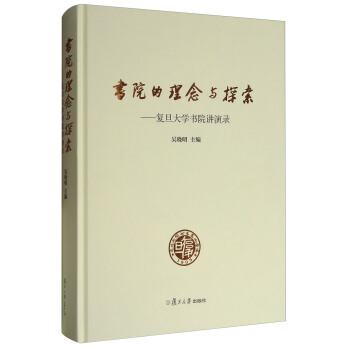

![中國最美書店:鍾書閣 [Zhong Shuge:The Most Beautiful Bookstore in China] pdf epub mobi 電子書 下載](https://pic.tinynews.org/12169711/59b8ad58Ncd9a6ba4.jpg)

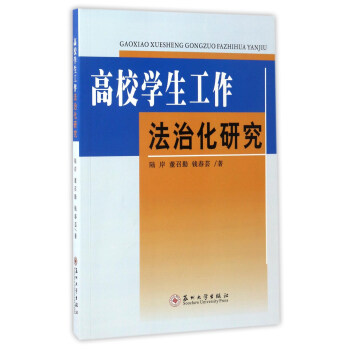
![鐵血與音符:德國人的民族性格 [How to Treat the Germans] pdf epub mobi 電子書 下載](https://pic.tinynews.org/12170295/599fd2f3N77453a3f.jpg)
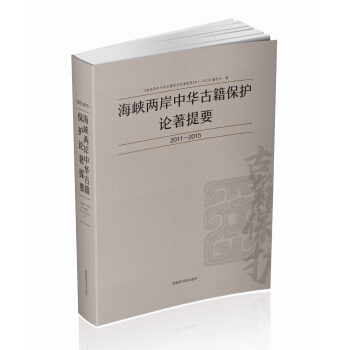

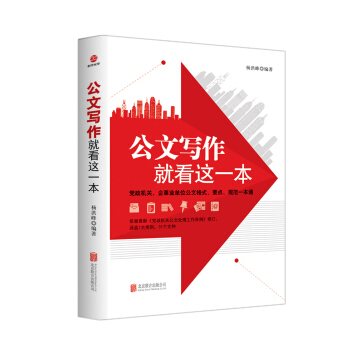


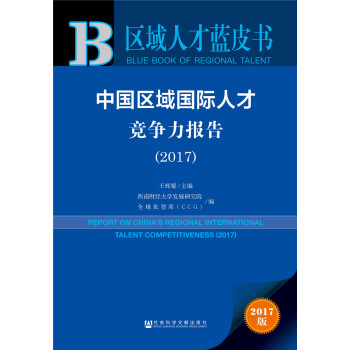
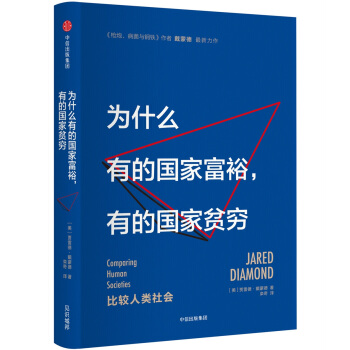

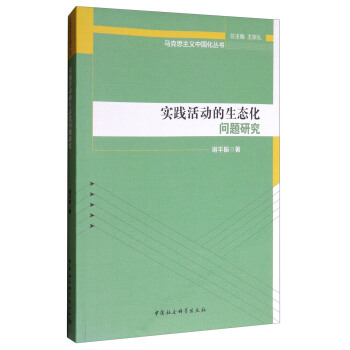
![中國社會科學院國情調研叢書·性彆偏好與性彆選擇:少數民族齣生人口性彆比問題研究 [Gender Preference and Sex Selection:Research on the Sex Ratio at Birth of the Minority Population] pdf epub mobi 電子書 下載](https://pic.tinynews.org/12171913/59b67645N3dfb875f.jpg)
